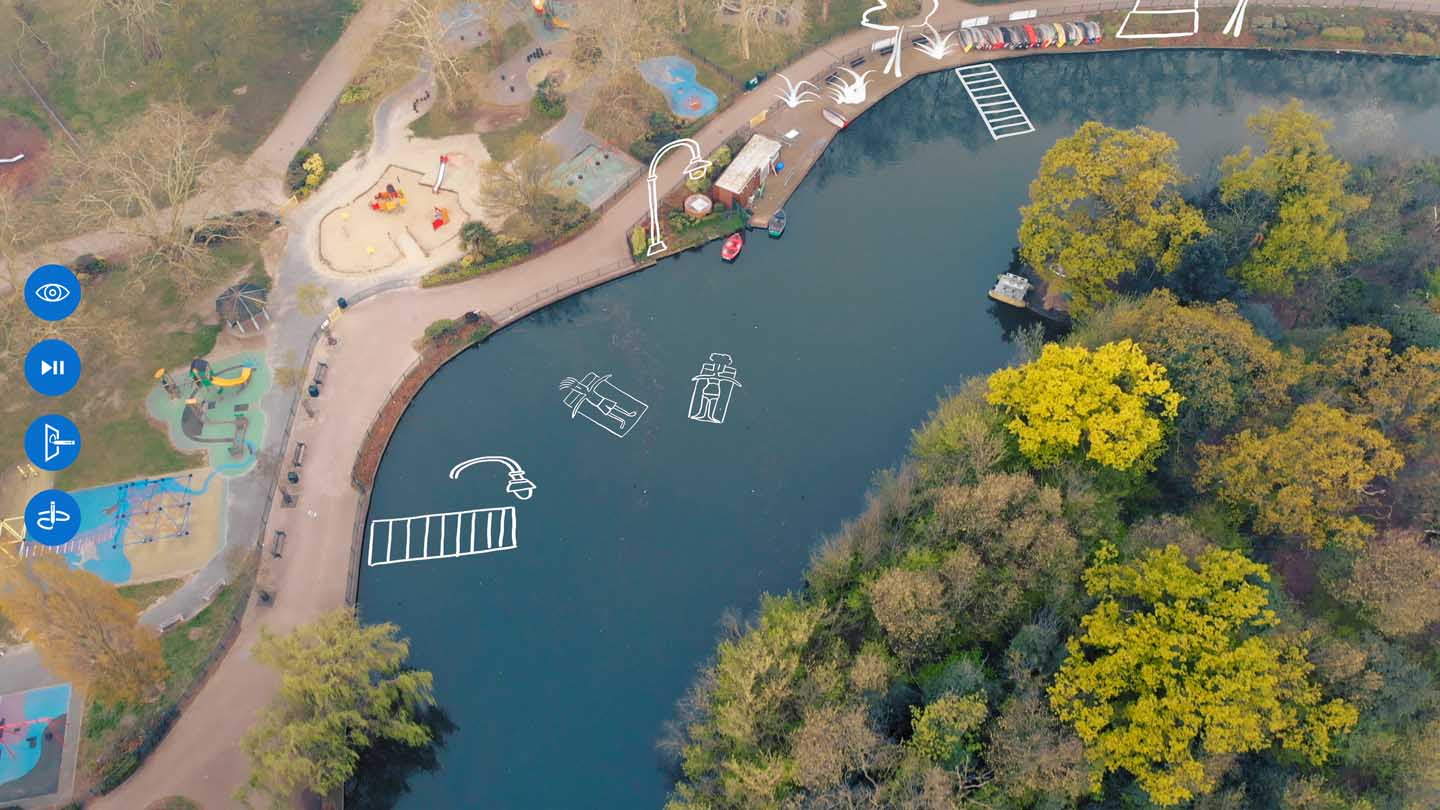Traits
Ideation tool for designing spaces
The Challenge: Designing public spaces around people first, has become more relevant as concerns grow over citizens' wellbeing. At the same time, local communities are rarely asked to engage in the design of their space, leading to poor design decisions and frustration. This is partly due to the lack of simple tools that allow citizens to deliver outputs that can be taken seriously by decision-makers.
The outcome: Traits is an application for sketching onto video footage. This is made possible by real-time creative compositing, a technique we have developed to combine the simplicity of 2D hand sketching with the visual appeal of video rendering. This makes collaborative design possible with anyone and for any spaces which can be filmed.
Context
Together with Golant Innovation and Furtherfield, we were awarded an Innovate UK Design Foundation grant to explore space design and placemaking.
We specifically decided to look at low-cost and low-entry-barrier solutions that would allow to engage local population in public consultations.
This led to different proposals, including Stethoscope, a system for exploring spaces and sharing memories, thoughts or ideas using sound in a soft augmented reality fashion, and what ultimately became Traits.
The Project
At Wolf, the design process is very much anchored into the idea that key insights, that is insights that will spark innovative ideas, are to be uncovered from observing real people during the research phase. To do so and over the course of two months, we took part (as observers) in various sessions of placemaking, gathering people from all backgrounds to plan, design and think public spaces. We also interviewed professionals from the design industry in our own network and gathered the following thoughts:
- The way context is given is key to a good ideation session. It allows for making sure that everyone is onboard and that whatever comes out of the session is actually relevant to the specifics of the project
- There are many technologies out there to capture reality or reconstruct it in order to build directly inside a spatial context, but they can be quite expensive and complex to deploy for large spaces
- The way the output is shared is key to make people understand what the idea is all about (hence the very notion of ‘rendering’)
- 3D as an output is great (when curated properly) but nothing beats 2D when it comes to quick input
Technology
In parallel to all that, we started to think of all the progresses that had happened in technology over the last decade and how this would bring new design opportunities at reduced costs. Take real-time compositing, something that we have been playing with since 2014, combine it with consumer grade drones that allow for capturing smooth high-quality images of anything from virtually any angle and give some creative control to the user and you get a new type of ideation tool with a new visual language
User Experience
Traits is as simple to use as it looks. It's literally sketching on a tablet. The first trick is that each doodle can be moved on 3 axes in order to create a real 3D scene. The second trick is that all that is done directly inside a video by using the same compositing techniques as what has been used in Hollywood movies for decades. However, this is all done in real-time here, making the experience fun and the output engaging without any extra post-production or rendering effort

Using Traits
Our patent-pending technology is currently running as a private beta with selected partners.
Contact us to see how Traits can help you: traits@wolfinmotion.com
Follow us on Instagram to get the latest updates













